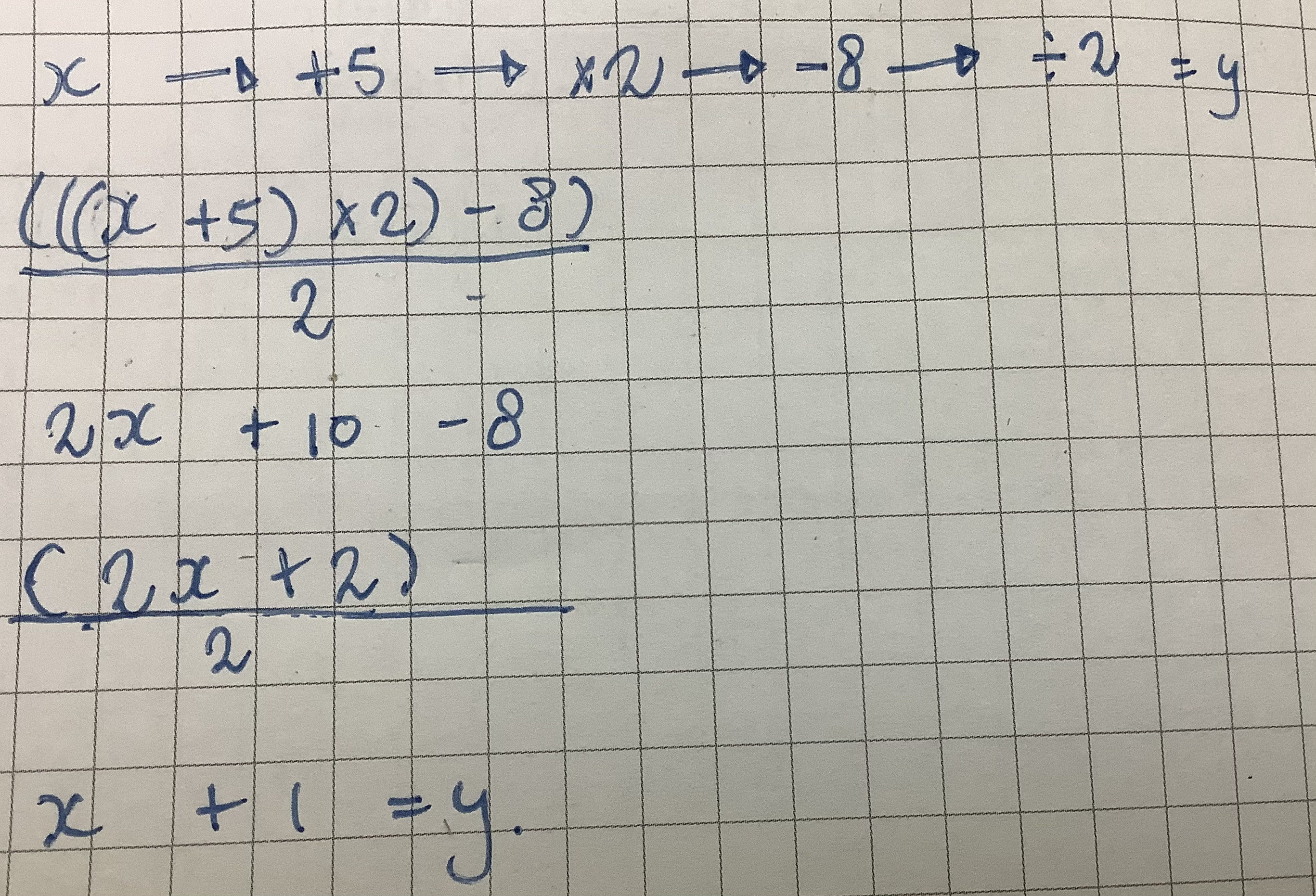Copyright © University of Cambridge. All rights reserved.
'Machines' printed from https://nrich.maths.org/
Show menu
Thank you to everybody who sent in their ideas about this task. The children at St John's C of E Primary School in England said:
First question) Take away the first letter until the penultimate number when you take away the last letter and your answer should be A.
Second question) You add five to the first number, then you double your answer, then you minus eight and finally divide by two and your answer should be eight.
Stella from Chigwell School in England described this in a different way:
For the numbers box you +5 then times by 2 then you -8 then you divide by 2.
Richard from Meyerholz in the USA described what each box does:
The machine is like a function table. Each box has a function.
The function of the red box is "add 5".
The function of the gray box is "times 2".
The function of the green box is "subtract 8".
The function of the blue box is "divide 2".
Molly from Lythe School explained how they worked out what each box does:
I started by looking at the first example and I could see that the 12 was doubled to make 24. Next, I already knew that 8 take away 3 got the answer of 5. So I had already had figured out you add 5 and double the answer. Then I knew 16 minus 8 equalled 8; however it wasn't the same as the other one except for one thing they did have in common: you subtracted 8. Then I already knew that the final part was halved which finished the sequence off, and I knew that I was right because I did the inverse operation so add 4, double the answer, halve that answer and subtract 5.
Also, the end number is always 1 more than the number you started with.
Well done to all of you for working out what each box does! I wonder why the end number is always one more than the starting number?
We received a lot of solutions from the children at the British International School in Shanghai, China. Floris used some algebra to explain why the answer is one more than the number you start with:

Thank you for sending that explanation in, Floris! I wonder if it's possible to show that the final number is always one more than the starting number without using algebra, perhaps by writing an explanation or drawing a picture? If anybody has any ideas about this, please email us with your ideas.